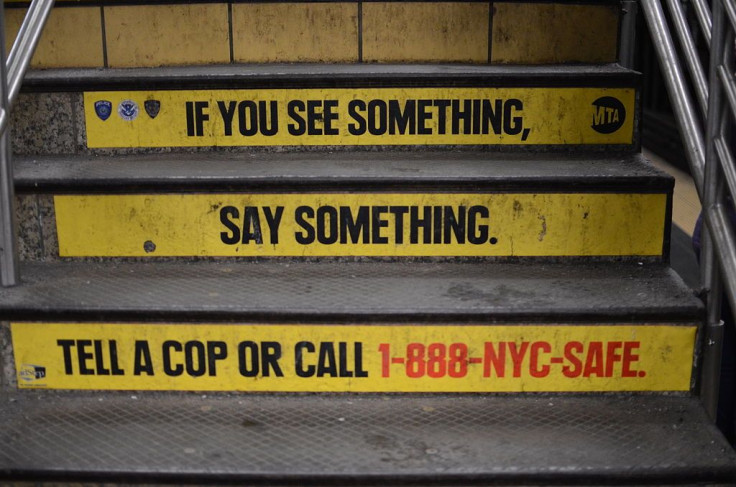Bystander Intervention: Myths Surrounding Gender Norms May Determine Whether We Step In To Stop Sexual Violence

Women "asked for it." Men "must be gay." Those who subscribe to these kinds of myths surrounding sexual assault may be less likely to intervene, suggests a new study published in the journal Violence and Gender.
Study authors Dr. Judith E. Rosenstein, of the United States Naval Academy (USNA), and Dr. Marjorie H. Carroll, of the United States Military Academy, cited that the "bystander approach" has become increasingly popular on college campuses and within the military; if you see something, say something. It's been a major factor in sexual assault prevention or intervention since 1964, when Kitty Genovese was raped and murdered in front of onlookers on a city street. However, to date, Rosenstein and Carroll have found that this approach focuses almost exclusively on female victims despite the fact men can be (and often are) victims, too.
"While a large portion of sexual assault victims are women, there is growing recognition that men experience sexual violence more often than commonly believed," the authors wrote. "Moreover, in certain communities, such as the military, men outnumber women as victims on an annual basis. Consequently, focusing exclusively on female victim-centered sexual violence considers only part of the problem."
So, how does accepting rape myths factor into men's and women's likelihood of intervention? Rosenstein and Carroll collected data from 970 men and women entering the USNA — 731 were men and 239 were women. Students attended mandatory meetings, during which they were given basic definitions of sexual assault and how they could go about reporting an incident. After this meeting, students were then given the option to complete a survey.
Students answered questions having to do with rape myths, such as women "asked for it" and "it wasn't really rape." Myths for men fall anywhere from it is "not a big deal," to he "must be gay" and so masculine and strong that he could fight anyone off. Students also completed the "Intent to Help Friends" and "Intent to Help Strangers" scale forms, which included a variety of intervention behaviors, like asking someone if they need help, telling someone their drink was spiked, and discussing warning signs of abusive situations.
Consistent with previous research, Rosenstein and Carroll found that men displayed higher levels of acceptance for both female and male rape myths. And as Rosenstein and Carroll expected, when the victim was known by the bystander, women indicated that they were more likely to intervene and people with higher levels of female rape myth acceptance (RMA) were less likely to intervene. Yet, male RMA was also negatively associated with respondents' intent to intervene, though it was to a lesser extent than females.
This difference suggests that women with higher male RMA may be less likely to intervene than men.
"It appears that greater acceptance of male rape myths is associated with a decreased willingness to intervene on behalf of a stranger," the study authors wrote. "While there were significant gendered differences associated with intervening on behalf of someone known, gender appears less relevant to intervening for a stranger after accounting for male RMA."
Much of what Rosenstein and Carroll found was expected, but they were surprised to find that greater acceptance of male rape myths was associated with a lowered intent to help a stranger.
"However, because discussions of sexual violence are often female-victim centric, it seems reasonable that respondents were picturing a female victim when answering the bystander questions," they explained. "Thus, the strength of the relationship between male RMA and bystander intervention is even more surprising."
Overall, higher RMA lessens the likelihood bystanders will step in to stop sexually violent acts. Rosenstein and Carroll concluded that "even if prevention education focuses on reduced female victimization and associated myths, there is reason to discuss male victimization and myths, particularly those related to masculinity."
They made a point to mention, too, that an individual's cognitive interpretation is key in their decision to intervene. In which case, prevention education would benefit from debunking rape myths as a way to not only improve bystanders' ability to identify both a situation as worth of intervention, but to recognize their responsibility to say something.
Source: Rosenstein JE, Carroll MH. Male Rape Myths, Female Rape Myths, and Intent to Intervene as a Bystander. Violence and Gender. 2015.



























